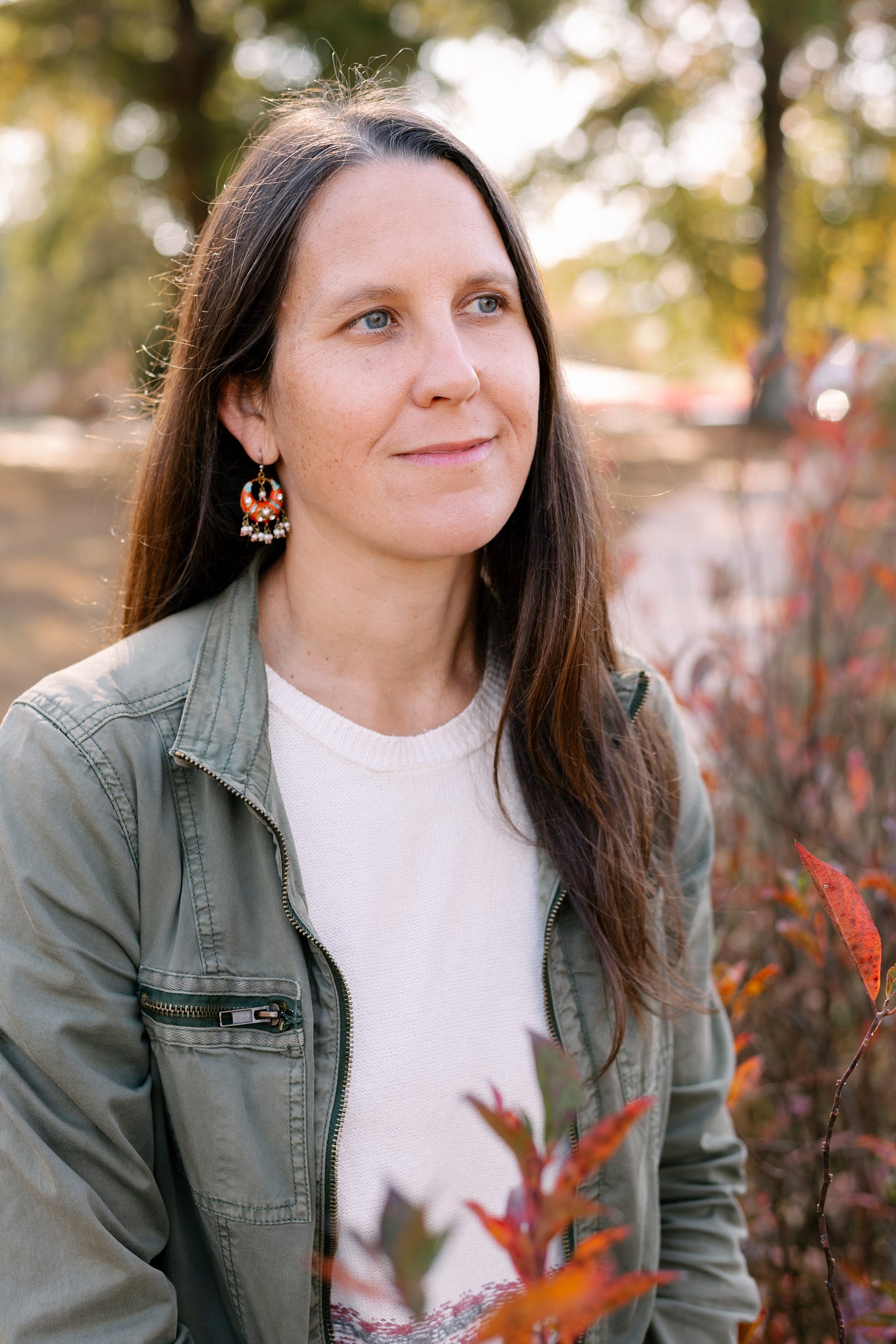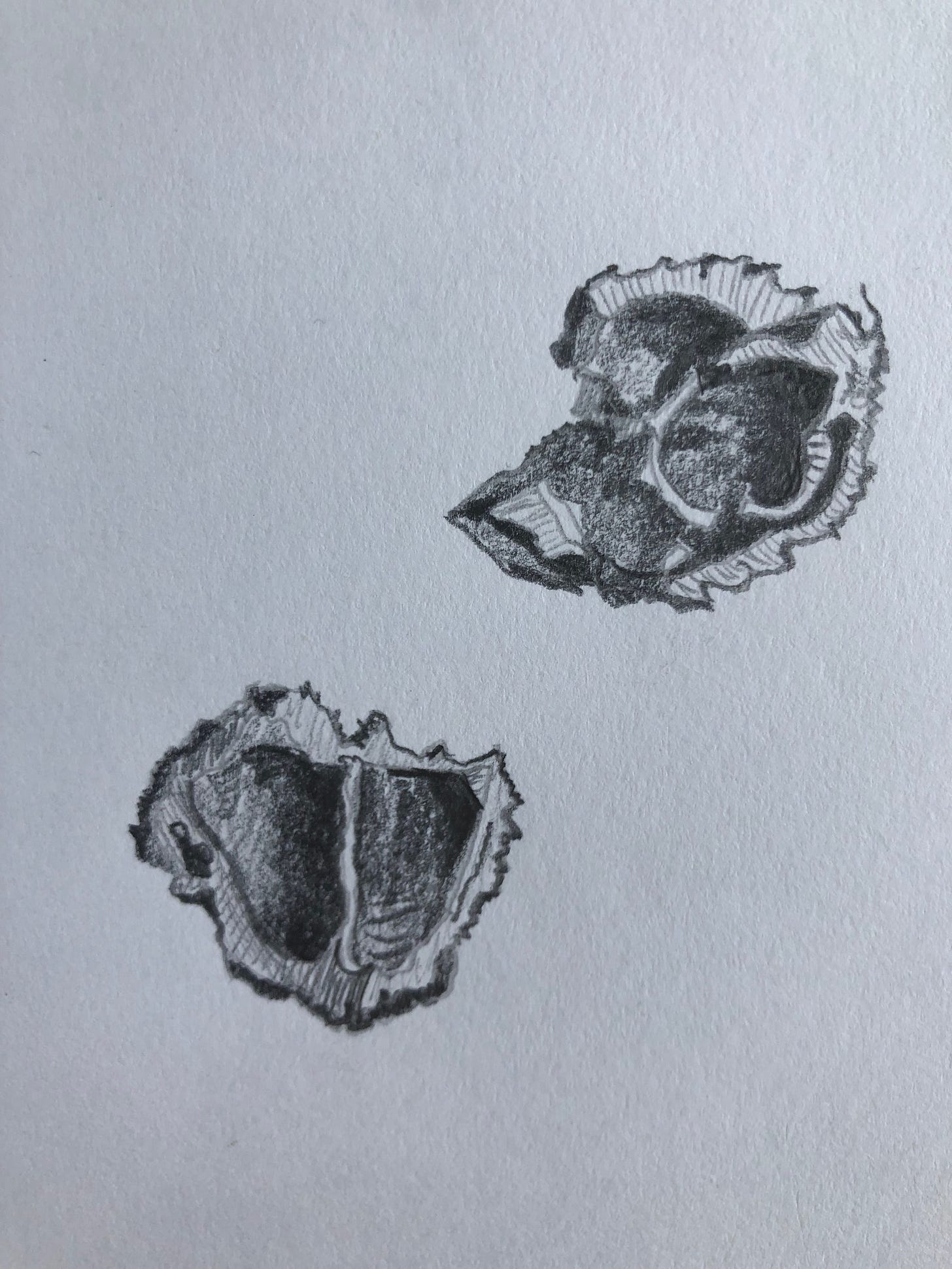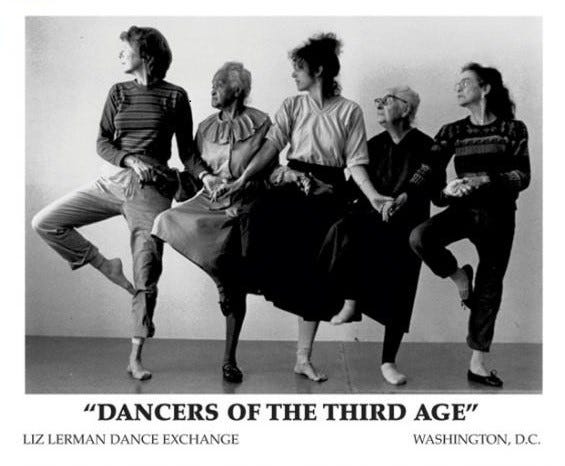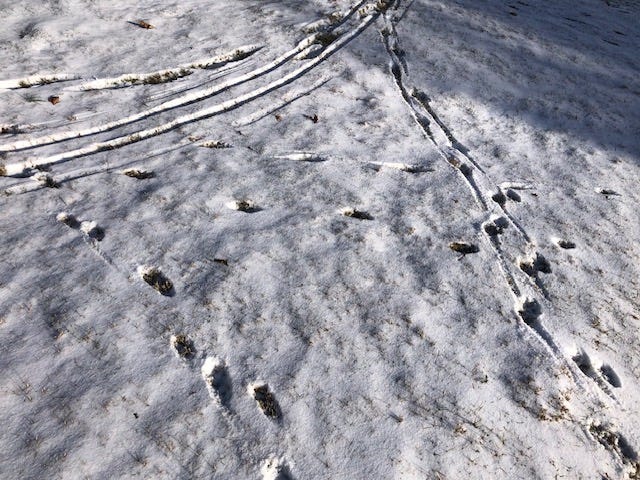"I'm still a believer in using little cracks of time to write, wherever I may be"
The Age of Deer author Erika Howsare on changing her writing process as her kids grow and as she moves across genres
Hello there! This is a good creatures interview, a series that explores the intersection of caregiving and creative practice. I’m so excited to showcase people doing lots of kinds of caregiving—people caring for kids or pets or other family members and/or caring for space through gardening or community work or activism—and lots of kinds of creative work.
If you know (or are!) a good creature whose work we should feature, send me an email—you can just reply to this newsletter.
Today’s interview is with Erika Howsare, whose great new book The Age of Deer examines the complex relationship between humans and deer through science, philosophy, and history. The book takes us from medieval Europe to hunting trade shows and a Charlottesville tunnel that aims to reduce deer-vehicle collisions by getting deer off highways. I really loved the mix of rigorous, experiential research and precise, sometimes lyrical description. (She has a great essay, Skin to Skin with a Deer, in Orion that I included in a sampler on the first day of my creative nonfiction course this semester to introduce students to the genre.) Kirkus calls The Age of Deer “outstanding natural history writing,” and the Washington Post proclaims it a “masterpiece.”
Below, we talk about the value of having a separate physical space for writing, how poetry helped her find her way into the nonfiction book, and Erika shares the artmaking fairy godmothers that guided her through her early years of writing and mothering.
Who do you care for?
I have two daughters, ages 13 and 10, who homeschool, so we’re often together. They do most of the work these days to take care of our household animals—chickens, rabbits, and cats.
What kind of creative work do you do?
I am a poet and nonfiction writer—currently focused on my recently published nonfiction book, but also keeping up a practice of writing poetry and sharing it with my writing groups. I love writing essays and exploring the places where different genres can meet and mingle. After finishing The Age of Deer I collaborated with a friend to make a podcast companion to the book, called If You See A Deer. I also like to draw and paint (often leaves, walnut shells, other things from the land where I live) and take photos (often of the ground).
What’s changed in your creative life since becoming a caregiver?
Things keep on changing as my kids move through the stages of their own growth. When my first daughter was a baby, I remember writing and squeezing in paid journalism work while she slept. Somehow I managed to write a manuscript of poetry during that time. With two kids, the equation got trickier, but my husband suggested I take one morning a week to go off and write by myself. I took to camping out at the local community center, in a lounge with secondhand furniture and intermittent heat. Not a lot of hours per week, but so many more than zero—those mornings became the anchor of my writing life. In the bathroom of that lounge was this poster titled Dancers of the Third Age, and I thought of these dancers as my artmaking fairy godmothers.
My nonfiction book process took us through a couple more stages; I had to ask my kids for more uninterrupted work time than I ever had before, and the pandemic was happening so we were all in the house together and it wasn’t as clear where the writing started and the mothering stopped. But they became a lot more self-sufficient during those years and I wouldn’t change the way it all unfolded. They are very interested in the book because they’ve seen so much of the process; they got to come on some of my research trips so they feel connected to the project and the stories about it, and have done their own writing and art about these experiences. It all really feels like one big process to me; it’s all just our life together. We are really lucky to be able to set things up this way.
❤️️ if you’ve learned from the creative caregivers in this series, clicking the heart at the top or bottom of this newsletter will help other writers find us! ❤️️
What do you do to help activate the switch (if it is a switch) between creative-brain and care-giving brain? (Is it possible to switch?)
Having a physical space is definitely very helpful. Also during the pandemic and the book-writing process we added on to our house, which gave me a little office for the first time since having kids. That feels like a real retreat and tells my brain to get into work mode. But I’m still a believer in using little cracks of time to write, wherever I may be—watching basketball practice, writing a little poem in the bleachers.
What’s changed about your process? About your medium or genre?
The nonfiction process is quite different from the poetry process, obviously. Writing a nonfiction book involved a lot of research, travel, interviews and other ways of engaging directly with the world. I don’t know if I made the genre switch because of any caregiving-related reason, but I did want to be able to communicate with a wider audience than I’d been able to through poetry books. And this book’s topic seems to be instantly understandable and relatable in a way that my poetry hasn’t been and probably never will be. On the other hand, poetry is still part of the process. I recently found some notebooks from the beginning of the project in which I was freewriting and just exploring the resonance of the subject of deer for myself through poetry fragments—this is writing that didn’t make it into the book itself, but it helped me claim the topic and find its most interesting corners.
Learning how to be more graceful and kind and demonstrative is absolutely part of being a mother for me; it’s one of the ways that motherhood has invited me to grow.
What has caregiving given you / taken away from you?
When I picture myself, say, back in my MFA days, the word I would use to describe that person is “blade”—self-contained, sharp, effective, sort of disconnected or set apart from the surroundings. I wrote a lot and had few clues about how the writing could connect me to other people beyond my tiny MFA cohort (though, to be clear, those connections were and continue to be really wonderful).
At this point, twenty years later, I’m so much more woven together with other people. The word now would be “network” or something along those lines. I’m leakier and work more slowly and can’t always think of the word or idea with the same thrill or feeling of mastery as I did then. On the other hand I feel so much more integrated as a person, and my creative practice is connecting me with people all the time—many kinds of people. Learning how to be more graceful and kind and demonstrative is absolutely part of being a mother for me; it’s one of the ways that motherhood has invited me to grow. Being with my kids, other parents and kids, students, and writing group friends is a creative practice that feeds a desire for my writing practice to also be a conduit for love and expansiveness.
Erika Howsare's nonfiction book, The Age of Deer: Trouble and Kinship with Our Wild Neighbors, was published in January by Catapult Books. She previously authored two books of poetry and several chapbooks, and she hosts the podcast miniseries If You See A Deer. Her essays and reviews have appeared at Orion, LongReads, the Los Angeles Review of Books, and other outlets. She lives in rural Virginia, where she worked in journalism for twenty years and teaches writing in the community.
You can read more at erikahowsare.com and listen to her podcast, If You See a Deer, here. She’s on Instagram as erika_howsare and facebook as Erika Howsare.
Erika’s got lots of upcoming events for her book, and you can find the whole list on her website. She’s giving a talk via zoom on Monday, March 4 at 7.30pm eastern, and you can find info about that here. And if you’re in New York, you can see her in conversation with Emily Raboteau at Unnameable Books in Brooklyn on April 6!
Write More, Be Less Careful is a newsletter about why writing is hard & how to do it anyway. You can find my books here and read other recent writing here. If you’d like occasional dog photos, glimpses of my walks around town, and writing process snapshots, find me on instagram.
If Write More has helped you in your creative life, I’d love it if you would share it with a friend.









I love, love, love how, when Erika was in the thick of parenting, she went out one morning a week to write. Yes! I did the same when my kids were young, but it was one evening a week. And I absolutely agree with her that this can become "an anchor" of a writing life. I share this simple idea with moms who want to write as often as I can. It's gold!
P.S. Nancy, I was at your panel at AWP on incorporating research and it was fantastic! I had to leave a little early or I would have said hello. Now I'm *really* looking forward to your book!
I always learn from these interviews, and this one especially resonated. Erika has such a unique voice and yet her experience feels so familiar!